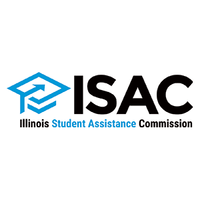ISAC: Scaling Texting to Improve Outreach

Overview
The Illinois Student Assistance Commission (ISAC) has one mission: to provide Illinois students with information and assistance to help make education beyond high school accessible and affordable. Currently, ISAC is working toward the goal of increasing the number of adults in the state with a postsecondary credential to 60 percent by 2025. ISAC provides students and families with help to make it to and through college. For example, through ISACorps, comprised of recent college graduates, ISAC counsels students in community college districts. They provide personal college access counseling to help students get to college.
Challenges
ISAC staff needed a new way to continue to scale their outreach efforts statewide. They were able to reach community members through events such as college fairs, workshops, and information materials. However, staff wanted a way for students to be able to connect with a staff member whenever they needed. With this need in mind, staff turned to Signal Vine to help create the ISAC College Q&A Program.
Implementation
Matthew Montez, Outreach Planning and Partnership Manager, led the implementation process at ISAC. Working with the Signal Vine team, Matthew wanted to take a unique approach to help support ISAC’s current outreach methods.
ISAC chose to use texting in two ways. First, they wanted to broadcast one message per month to students and families. The information in this monthly message ranged from a financial aid tip to general advice about college planning. Second, they wanted students to see the texting program as an always-available, always-on resource. When students had questions and their ISAC Corps member was not available, ISAC wanted students to know they could text for help at any time. This helped to provide students with a resource to turn to whenever they needed help. Ultimately, scaling texting to improve outreach was successful, as discussed in the results.
Matthew notes that before ISAC turned to texting, he had been in the communities ISAC serves to assist students and parents. He remarks that this information served well in getting started with texting. He had a deep awareness of the types of help students and families requested. With this knowledge, he was able to create a relevant, helpful text campaign for students and families.
Results
Matthew notes that ISAC is pleased with the engagement they’ve seen with their students. The program’s overall engagement rate is 99.3 percent, meaning that nearly all students have responded to at least one text message sent by staff. Further, Matthew states that ISAC has received positive feedback from both high schools and community colleges in the state of Illinois. Also, he notes that one of the best results stems from working with Signal Vine to create two profile fields to note students’ high school districts and colleges of interest. This has helped to engage students at a more personal level with relevant information.

While scaling texting to improve outreach has worked well for ISAC, Matthew is currently brainstorming next steps for ISAC’s College Q&A Program. He confirms that plans are being made to further expand and advertise the service to more students in the state.
Best practices
Matthew notes two main best practices when it comes to text outreach:
- Don’t hesitate to ask students follow-up questions to provide the best support. As an employee of a state agency, Matthew remarks on how crucial it is to choose language carefully to provide the best support to students and families. When students text a question, he typically begins by asking one or two follow-up questions to make sure he understands the questions fully. This helps to ensure he has all needed information before putting a response into writing for students to see.
- Near-peer mentors are invaluable. The near-peer mentors that make up ISAC’s Corps staff have served as great promoters of the College Q&A Program. These staff members promote the College Q&A Program as being the best resource when an ISACorps member is not available. Further, as near-peers and recent college graduates, they are familiar with many of the issues students face and can provide appropriate support to students.
Our decision to work with Signal Vine for text-messaging services was based on many factors, but particularly our need to meet students where they are and when they need us. Illinois is a big state, and students have so many things going on in their lives. We wanted to provide our same high-quality advising services, but in a way that focused on the individual versus our more traditional school and community-based events and services.
"A student may think of a question after they’ve attended one of our workshops, or when they get home, or after receiving some type of communication from a third party, or, as well all know, during the summer or other out-of-school times in which it is critical to keep students on the path to postsecondary success.
Similar Customers
Communicating effectively with your campus communities is of paramount importance right now
If you’d like to learn how Signal Vine can help, please join us for a demo.

